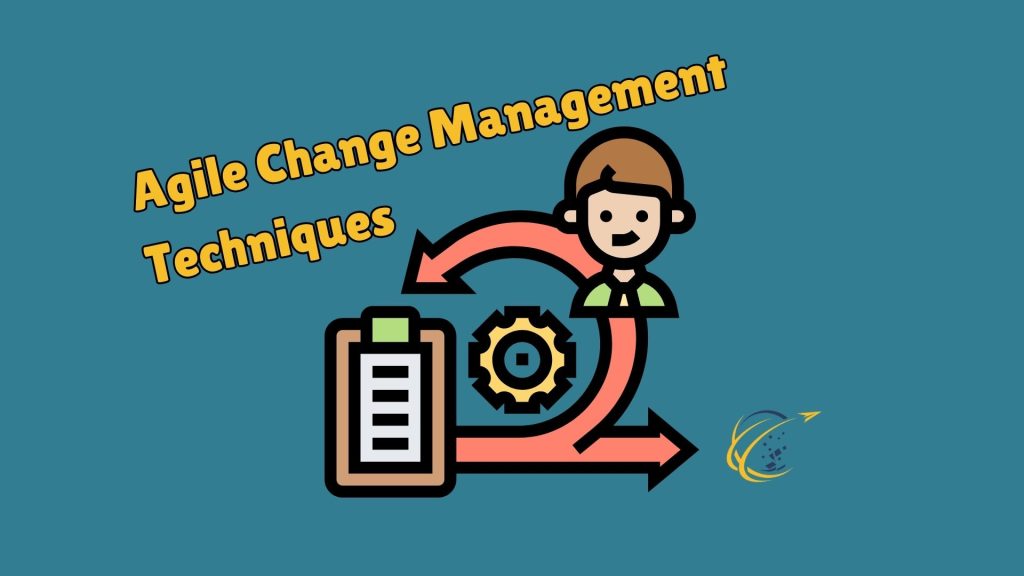
Understanding Agile Change Management
Agile change management focuses on adapting to change with flexibility and speed. Unlike traditional change management, which follows a rigid, step-by-step process, agile change management techniques prioritize continuous improvement and quick adjustments. This approach allows your team to respond rapidly to new information or challenges without getting bogged down by lengthy approval processes.
One key difference in agile change management is its use of iterative improvements. Instead of implementing change all at once, agile change management encourages small, manageable updates that can be tested and refined over time. This strategy reduces risk and makes it easier to identify what works well and what needs further adjustment. By making changes in smaller steps, you also allow your team to adjust naturally, rather than overwhelming them with a sudden overhaul.
Flexibility and responsiveness are at the core of agile change management techniques. Regular feedback from team members and stakeholders helps guide the direction of change, ensuring it aligns with everyone’s needs. This constant feedback loop also supports transparency, as everyone involved stays informed and engaged throughout the process. Agile change management techniques create a collaborative environment that adapts quickly, paving the way for smoother and more sustainable change.
Building Cross-Functional Teams for Change
Building cross-functional teams is essential for effective agile change management techniques. In a cross-functional team, members from different departments collaborate, bringing diverse skills and perspectives to the table. This diversity supports creative problem-solving and ensures that change initiatives address multiple areas of the organization. By involving representatives from various functions, you gain insights that might be overlooked in single-department teams.
Collaboration in cross-functional teams fosters a sense of shared ownership over change initiatives. When team members from different areas work together, they develop a stronger commitment to achieving common goals. This shared ownership helps build alignment across departments, reducing resistance to change and making the transition smoother. When each team member feels their expertise is valued, they become more invested in the success of the change.
Cross-functional teams also enhance communication, an important component of agile change management techniques. Regularly working with colleagues from other departments encourages open discussions, helping everyone understand the impact of proposed changes. This transparency leads to more informed decision-making, as each team member can raise potential challenges and solutions early in the process. Through cross-functional teams, agile change management becomes more collaborative, responsive, and well-rounded.
Incorporating Feedback Loops for Continuous Improvement
Incorporating feedback loops is a core part of agile change management techniques, supporting continuous improvement and keeping change initiatives on track. Feedback loops allow you to gather insights from team members, stakeholders, and end-users, creating a full picture of what’s working and what needs adjustment. By listening to each group, you ensure that the change process remains relevant and effective over time.
Regular feedback encourages ongoing refinement, allowing your team to make small adjustments rather than waiting for a major overhaul. These incremental improvements align change processes with evolving needs, keeping your organization adaptable. With frequent feedback, your team can quickly address issues, enhancing the overall quality of the change initiative.
Engaging team members and stakeholders in feedback loops also fosters a collaborative culture. When people feel heard, they’re more likely to support and contribute to the change. This input from diverse perspectives strengthens agile change management techniques, as each round of feedback helps clarify goals and actions. By maintaining active feedback loops, you keep your organization responsive and aligned with both internal and external expectations.
Setting Short Iterative Goals and Milestones
Setting short iterative goals and milestones is an essential aspect of agile change management techniques. These small, achievable goals help teams focus on gradual progress rather than overwhelming them with large, complex tasks. Breaking down change into smaller steps creates a sense of accomplishment with each completed milestone, boosting team morale and maintaining momentum.
Short-term goals also allow for regular assessment and adaptation. When goals are set iteratively, you can quickly identify what’s working and make adjustments as needed. This flexibility is key to agile change management techniques, enabling your team to respond to unexpected challenges without losing sight of the larger objective. By keeping goals manageable, you make the change process less intimidating and more approachable.
Moreover, these iterative goals help build a positive cycle of success and reinforcement. As teams reach each milestone, they see the impact of their efforts, which encourages continued engagement. This approach creates steady progress without risking burnout, keeping your team motivated and aligned with the change initiative. Setting iterative milestones, therefore, supports a smoother, more effective path to lasting change.
Promoting Transparency and Open Communication
Promoting transparency and open communication is vital in agile change management techniques. Transparent communication ensures everyone is informed about the change process, goals, and any adjustments along the way. This openness builds trust, making team members more likely to contribute their ideas and voice concerns. When people feel well-informed, they understand the purpose of each change and stay engaged.
Open communication also supports adaptability, which is essential in agile change management. With regular updates and open channels for feedback, your team can quickly adjust to new information or unexpected challenges. This responsiveness keeps the change process aligned with team needs and goals. Consistent communication through meetings, updates, and shared documents helps everyone stay on the same page, reducing the chance of misalignment.
Additionally, promoting open communication empowers your team to take ownership of the change process. When team members know they can ask questions as well as receive clear answers, they feel more involved. This approach helps create a collaborative environment, encouraging everyone to work together effectively. Transparent and open communication in agile change management techniques fosters a culture of trust, flexibility, and shared purpose, making the path to change smoother and more successful.
Using Agile Tools and Techniques to Track Progress
Using agile tools and techniques to track progress is essential in agile change management techniques. Kanban boards, for example, provide a clear visual of tasks and workflows. By breaking tasks into stages, you can monitor progress, identify bottlenecks, and reassign resources as needed. This visual layout keeps everyone informed and also helps teams stay organized, moving tasks smoothly from start to finish.
Daily stand-ups also play an important role in tracking progress and keeping communication open. These short meetings allow team members to share updates on their tasks, discuss any obstacles, and set priorities for the day. With regular check-ins, your team stays aligned, and issues are addressed before they become larger problems. Daily stand-ups create a rhythm of accountability, ensuring everyone is working toward shared goals.
Sprints add structure to agile change management by setting specific timeframes for completing sets of tasks. Each sprint focuses on completing particular objectives, which keeps your team focused and builds momentum. At the end of each sprint, you can review progress, gather feedback, and adjust strategies if needed. By combining these agile tools, you create a dynamic, responsive approach to managing change. This combination of tracking and flexibility keeps your team aligned and engaged, supporting ongoing improvement and adaptation.
Conclusion
Agile change management techniques offer a flexible, adaptive approach to managing organizational change. By focusing on collaboration, transparency, and continuous improvement, these methods keep your team engaged and responsive. Tools like Kanban boards, stand-ups, and sprints create a structured yet adaptable process that encourages real-time adjustments. With iterative goals, feedback loops, and open communication, you can navigate change effectively, aligning efforts with evolving needs. Implementing agile change management techniques strengthens your team’s ability to manage transitions, driving sustainable success and a resilient culture that embraces change.


